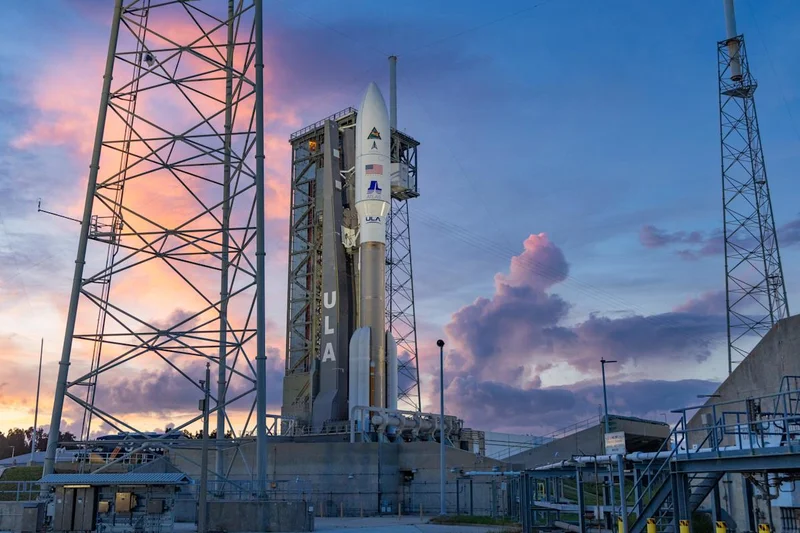Generated Title: ULA's Valve Hiccup: A Billion-Dollar Bottleneck?
Okay, so the ULA launch of the ViaSat-3 F2 satellite got scrubbed. Valve issue, they say. Not exactly confidence-inspiring when you're talking about a mission riding on a rocket with a $100+ million price tag before you even factor in the payload. And this isn't just any payload; it's a key piece of Viasat's next-gen broadband strategy.
The High Stakes of High-Bandwidth
Viasat's betting big on the ViaSat-3 series. They're touting it as a game-changer, promising to more than double their existing fleet's bandwidth with the F2 satellite alone. That's more than double. Mark Dankberg, Viasat's CEO, is talking about "dynamic beam forming capabilities" and scaling performance. All sounds great, right? But let's peel back the layers.
The first ViaSat-3 satellite, F1, already ran into trouble with its antenna post-launch in 2023. Reduced capacity, delayed service. Now, F2 is grounded before it even leaves the pad. What are the odds of lightning striking twice? Is this a string of bad luck, or is there a systemic issue with the whole ViaSat-3 architecture?
The satellite itself is built on Boeing's 702MP+ platform, using electric propulsion and solar arrays from Spectrolab. Boeing's VP, Michelle Parker, emphasizes "reliability and timely delivery." But a valve issue on the ULA rocket throws a wrench into that "timely delivery" promise, doesn’t it? The rocket, an Atlas V 551, is a beast. Five solid rocket boosters, an RD-180 main engine, 2.7 million pounds of thrust at liftoff. All that power, and it's held up by a single valve. It's like building a skyscraper on a faulty foundation.
The financial implications are considerable. Viasat is positioning F2 to add over 1 terabit per second (Tbps) of capacity over the Americas, expecting it to enter service in early 2026 after months of on-orbit testing. Every day of delay translates to lost revenue, potential contract breaches, and a hit to their stock price. How much? Hard to say precisely without Viasat's internal projections, but we can make some educated guesses.

Viasat's overall capital expenditures for 2023 were around $900 million. A significant chunk of that would've been allocated to the ViaSat-3 program. If F2 is expected to generate, say, 30% of their future revenue growth, then a delayed launch could easily translate to tens of millions of dollars in lost opportunity per month. And this is the part of the report that I find genuinely puzzling: why weren't these valve issues detected earlier in pre-flight checks?
The ULA Factor: Reliability Under Scrutiny
ULA, a joint venture between Lockheed Martin and Boeing, has a reputation for reliability. But even established players have hiccups. This scrub raises questions about their quality control processes. The Atlas V has flown numerous times, but this particular mission, designated AV-100, is one of the last before the rocket's retirement. ULA has 11 more Atlas V rockets remaining: six for Boeing’s CST-100 Starliner and five for Amazon’s Project Kuiper. This incident puts extra pressure on those remaining launches. According to UPDATE: ULA’s Launch Readiness is GO! for Wednesday ViaSat-3 Flight 2 one of the most powerful commercial communication satellites – SatNews, ULA's launch readiness was initially "GO" for the ViaSat-3 F2 mission.
The weather forecast for the initial launch attempt was 95% favorable. Meteorologists cited a small chance of interference from cumulus clouds. It was NOT the weather, but a valve. You can plan for the unpredictable forces of nature, but you can't account for a preventable mechanical failure.
The launch was scheduled for 10:16 p.m. EST, with a 44-minute window. That window is now closed, and Viasat has to wait for another opportunity. The satellite, weighing in at 6 metric tons, was supposed to be deployed nearly 3.5 hours after liftoff. Now, it sits idle, costing Viasat money and delaying their broadband expansion plans.
Was this a one-off anomaly, or is it indicative of deeper problems within ULA's aging Atlas V program? And how much will this impact Viasat's projected growth for 2026 and beyond?
A Costly Pit Stop
A valve issue might seem minor in the grand scheme of spaceflight, but it’s a stark reminder that even the most advanced technologies are vulnerable to simple mechanical failures. For Viasat, this isn't just a setback; it's a potential billion-dollar bottleneck in their quest for global broadband dominance. The question now is whether they can recover quickly and get F2 into orbit before the competition gains an insurmountable lead.
